#william mumler
Text

William H Mumler - An image of 'Mrs French' with a ghost, circa 1868.
68 notes
·
View notes
Text

Woman’s spirit with a carte-de-visite on a table propped against an album, ca. 1865
#to me it looks like it could be a William H. Mumler#but I don’t have any credentials to assign it so#spirit photography#ghosts
42 notes
·
View notes
Photo
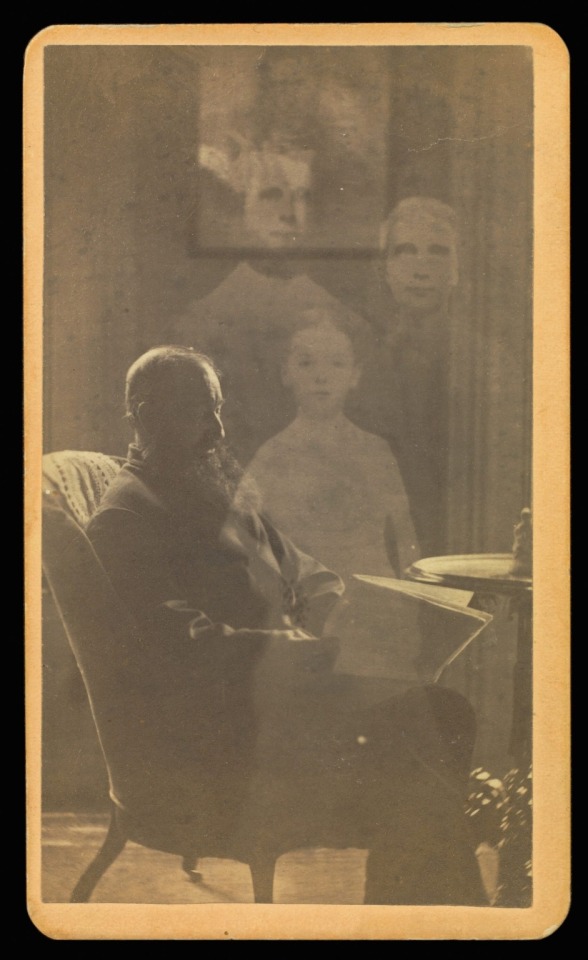
William H. Mumler, “Unidentified man with a long beard seated with three “spirits” (1861–1878),
Photo via Getty Museum
#art#photography#vintage photography#still life photography#william H. Mumler#creepy#scary#halloween#spirits#gettymuseum#1861#1800s#spooky
11 notes
·
View notes
Text

I guess if I'm going to do an episode on spirit photography I should probably show you some of the spirit photographs in question, right?
https://order-of-the-jackalope.com/mr-mumlers-ghosts
0 notes
Text
Let's take a look at "spirit photography," which became a phenomenon in the late 1800s and early 1900s.
In 1861, a Boston photographer named William Mumler took a self-portrait. When he did so, he mistakenly used a plate that had already been exposed. The result was a picture of him, with another person — white and, well, ghostly — superimposed over him. Mumler saw a business opportunity and began selling spirit photos to the public:
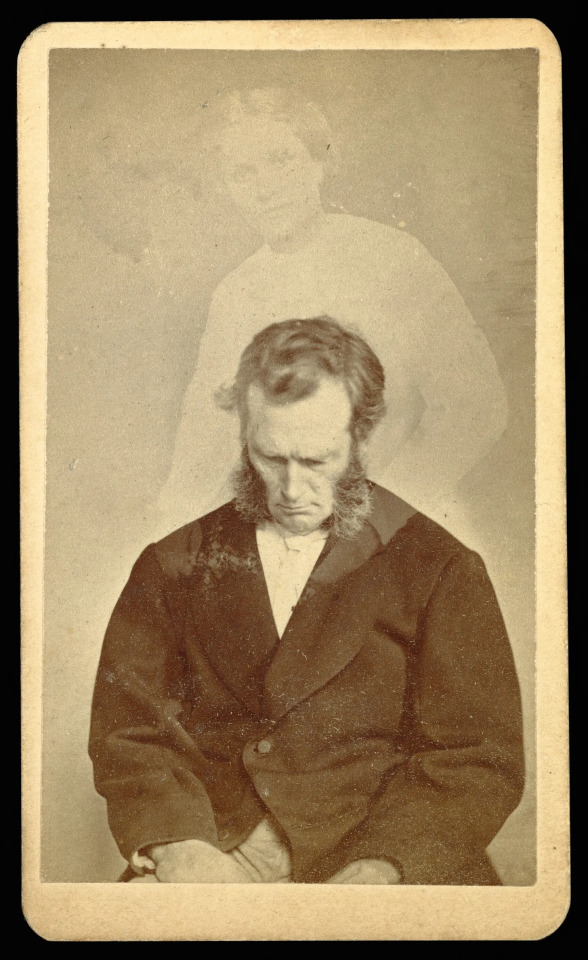

See more here:
{WHF} {Ko-Fi} {Medium}
82 notes
·
View notes
Text


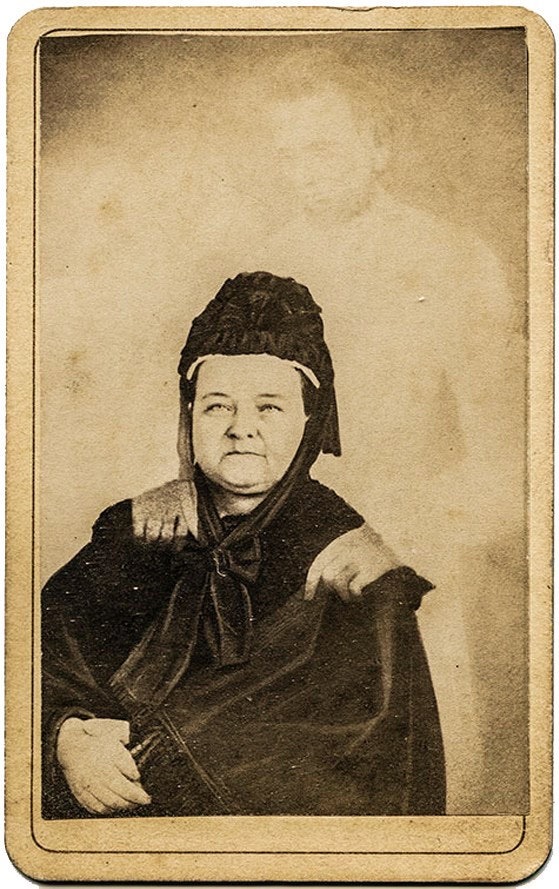




1. Herakles - Euripides tr. by Anne Carson, from Grief Lessons / 2. spirit photography - William H. Mumler / 3. Maud - Alfred Tennyson / 4. “Speak! Speak!” - John Everett Millais / 5. Wuthering Heights - Emily Brontë
#the desire to be haunted! the desire to see the ghosts of those you love!#web weaving#web weave#parallels#art#poetry#words#ghosts#anne carson#alfred tennyson#john everett millais#wuthering heights#emily bronte
192 notes
·
View notes
Text
1 note
·
View note
Text
Taking pictures of ghosts: Polaroids, instant photography, and paranormal investigation
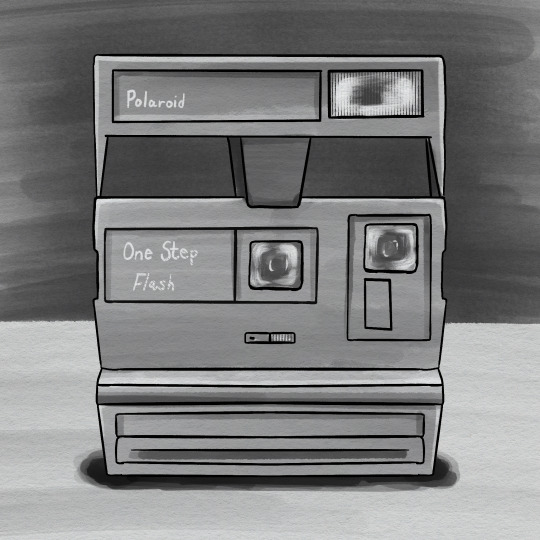
Spirit photography has a long and troubled history. When the subject comes up, my first thought is of hoaxers like William H. Mumler and William Hope, whose photographs were debunked in the 19th and 20th centuries, respectively. Much of the early belief in spirit photography seemed to rely on people not understanding the new technology of photography. Back then, people didn't know about how easy it was to doctor photos and shoot double exposures. (See also: the endearingly fake Cottingley fairy photos.)
Nowadays, we know how easy it is to Photoshop an image; we understand that photographs can be deceptive. How can you trust a digital photo that you know can be easily modified? Also, in an age when people are heavily filtering images that they post online, and maybe even making cosmetic changes to own their appearance and photographs, we have been trained not to trust pictures. We know that's trivially easy to fake things in digital photographs.
So it makes sense that instant photography has become increasingly popular when trying to photograph ghosts. After all, where's the room for fakery when an image is immediately output in a physical form?
Well, it turns out there are multiple ways to manipulate instant photos, and there are plenty of reasons to be skeptical of them as paranormal evidence, which I'll go into below.
There are people who I respect who have a lot of faith in instant photography, so I'm not ready to dismiss it as evidence of the paranormal. I'm always ready to be convinced that I'm wrong, so it's very possible that in the future I might come across a compelling reason to trust instant photography as a reliable ghost hunting tool. Personally, I absolutely believe that spirit photography is possible (with both film and digital cameras). It just isn't very probable, and it's easy to fake, so my first thought is always that an image probably isn't real.
I'm not really interested in debunking or casting doubt on the use of instant photography in paranormal investigation (though I think it's helpful to know any tool's limitations). However, if instant photography is vulnerable to manipulation, and that fact is well known and accessible via a simple online search, then why would such an unreliable medium be so trusted in ghost hunting?
At least part of that answer is nostalgia. Whether instant cameras are reliable for ghost hunting or not, it's obvious that they're popular. I've seen so many aesthetic images of ghost hunting kits that include Polaroid cameras. And even knowing what I now know about Polaroid manipulations, I understand the impulse to trust an instant photo over a digital one. It just feels more real.
The unreality of digital photography
It's incredible that digital photography is so accessible now. But the fact that we carry around smartphones that are capable of taking great pictures can make those images feel cheap, ordinary, and somewhat... unreal.
Unless you pay for a cloud service that backs up your photos as you take them, you could lose all of your recent shots if you lose your phone. Or you could be like me: I had an external hard drive fail and lost several years worth of photographs in an instant. There's something chilling and alienating about a part of the visual history of your life being wiped out. Those lost photographs (most of my pictures from 2012/2013 until about 2017) still upset and haunt me. So I think I have a particular ambivalence for digital photos; in the back of my head, I always feel like they could all disappear in an instant.
But whether or not you've ever lost your phone or had a hard drive crash, there is something ghostly and untrustworthy about digital pictures. At their core, they are insubstantial, simple to modify, and easily lost.
Instant photography's allure
Maybe this is my own nostalgia talking, but there's always been a certain appeal to instant photography. There're incredibly immediate and physical. You take the photograph, the camera spits out a packet of glossy paper and chemicals, and in ten minutes or so, it's been developed into a picture.
In the interest of full disclosure: I don't consider myself a photography expert by any means. (I barely count as a competent amateur.) But I have been using a Fujifilm Instax Mini 8 camera for about eight years, and a Polaroid Now I-Type camera for the last two years, so I have a decent amount of experience using two types of instant cameras. (Based on what I've seen online, the Fujifilm Instax line seems to be more popular than the more expensive and—in my limited experience, at least—more glitchy Polaroid Now line.)
Even in the age of digital photography, and despite their limitations, I'm always amazed by instant photos because they're physical products that I get to hold in my hand. They aren't digital detritus like the photos that pile up on our phones. They feel real. They are real.
Polaroids and ghost hunting
All that being said, instant photographs are more easily manipulated than you might think (check out this 2008 forum thread, where commenters offer some possible debunkings of ghostly Polaroids).
While I was researching this, I found a list of fifteen reasons why Polaroids are making a comeback, and was surprised to find that reason number seven was that Polaroid photos are "Easy to Manipulate." According to the article, which was published on thephotographyprofessor.com:
If you are still interested in doing some post-production type editing on your photos, you are in luck. There are all kinds of techniques you can use to manipulate your pictures, and some of them can be really unique. This is just one more benefit of using Polaroids for artsier photos.
One of the techniques you can use to customize your photos is pushing around the chemicals underneath the photo paper before they have fully developed. When the image appears on the paper, the fixer is still working so the chemicals can be moved around with a cotton swab or a pencil. This can create some incredibly unique effects.
Another technique you can use is exposing the photo to more light before the fixer has finished working. By shining a flashlight or other light source onto the image, you will double expose the film and create elements that would not have otherwise been in the picture.
There's even a Wikipedia page detailing ways to manipulate Polaroids. (Though it does note that newer Polaroid film is more difficult to manipulate than the older film types, which are no longer being manufactured.)
I also found an interview with a photographer on uniquephoto.com that went into detail about ways to manipulate Polaroids:
Polaroid Manipulation is quite simply manipulating the Polaroid print. After the print comes out of the camera, you have some time as it develops when the emulsion and the developer paste underneath are soft and manipulable. You can use a simple tool like a regular dried-up ballpoint pen and push the emulsion around, break it up, or push right down through the image to the black backing. Heating or cooling the print as it develops can affect it, too.
But, still, if you watch someone take an instant photograph and then look at that physical picture, it feels like fakery is impossible. There isn't a computer or smartphone in between the photographer and the final image. It's all done by an analog machine with a single purpose: to capture a visual record of what it's pointed at.
Even before I learned about Polaroid manipulation, I had a lot of skepticism about using Polaroids in paranormal investigations. My Polaroid camera is always introducing strange artifacts into photographs that I am very sure are not paranormal-related, so I wouldn't necessarily trust my Polaroid to show me something paranormal--unless I saw an anomaly that didn't resemble its usual misprints. (Though I suppose it's worth noting that it's always possible that I got a lemon.)
I'm not convinced that there's a valid technical reason to trust instant photos over digital ones. It seems like if a ghost can be captured by an analog camera, it can be captured by a digital one.
The only justification I can think of is just a general tendency to trust analog devices more when it comes to ghost hunting. And that's what I'm trying to suss out right now: is there a real reason to believe that analog devices are better for paranormal investigation? Or is something else (nostalgia? alienation and mistrust of tech?) motivating the tendency to trust retro devices over contemporary ones?
There's a lot more to be said about spirit photography, and maybe that's something for another day. But I want to dig deeper into why Polaroids and instant photography in general are so popular in the paranormal and beyond—which I'll do in an upcoming post.
#cryptidcore#cryptidacademi a#ghost hunting#ghosts#paranormalinvestigator#paranormal podcast#nostalgia#90s nostalgia#80s nostalgia#polaroid#analog photography#instant photography#instax#film photography
3 notes
·
View notes
Text
Victorians obsession with the dead and spirits
The spiritualism movement arrived to the UK in the mid 1850's and due the child mortality rate in the victorian era being so poor many parents saw the appeal of talking to their departed children and got involved in this practice. Another reason for the sudden rise of popularity among Victorian society was there fascination for anything supernatural, other worldly and occult.
Occultism and spiritualism probably wasn't an instant phenomenon in Victorian England as religion was a main part of society and peoples values meaning many people felt threatened by new ideas about creation and the world.
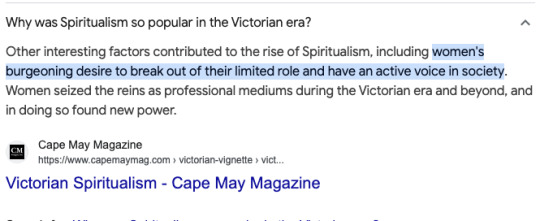
The introduction of photography (1938)
Memento Mori (Latin for "remember you must die" ) is the philosophy of reflecting on your own death as a form of spiritual improvement also symbolising the inevitability of death. This was popular in this era as, like the appeal for seances and mediums, many children did't survive childhood and often caught a fatal illness. Photos at this time were also expensive so only upper middle classes could really afford them. This divide in class made it likely that the only photos the lower classes had of there own children were of them dead as the middle classes would of been able to afford more pictures of there family. Post-mortem photos were seen as commemorating the dead and sometimes had the deceased positioned like they were sleeping.


Spirit Photography was also a common thing in the 19th century. Started by William Mumler, these pictures allegedly depicted the spirits of peoples loved ones in the same photograph as them. These pictures soon became evidence of spiritualist's core beliefs with mediums also working together with the photographer to enable the spirit to "appear". Unsurprisingly these photographs were found out to be fake and Mumler was convicted of fraud. Back then, photographic negatives were made using recycled glass plates that could be cleaned after each picture. If the plate isn't cleaned correctly however, the previous image remains on the glass meaning when you develop the other photo you will get a doubled exposure that includes both pictures but with differing opacity making the effect of a spirit being present.


1 note
·
View note
Text
Illusion!
William H. Mumler was an American spirit photographer born in 1832. His first spirit photograph was an accident, a self-portrait which when developed also revealed the "spirit" of his dead cousin. His most famous photograph was of Mary Todd Lincoln with the ghost of her husband Abraham Lincoln.
Though Mumler's photos were labelled as fakes, no one was able to solve the riddle of how Mumler created his apparitions.


0 notes
Text
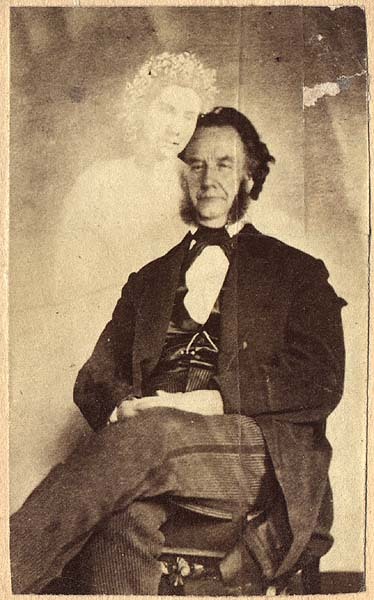
William H Mumler - An image of Moses A. Dow, Editor of Waverley Magazine, with the spirit of Mabel Warren, circa 1871.
2 notes
·
View notes
Text

Mr. Chapin, oil merchant - & his spirit wife & babe recognised, ca. 1861–1868
attributed to William H. Mumler
32 notes
·
View notes
Text
11/3/2023
it’s so cool that photos could be modified like this back then
0 notes
Text

“Moses Dow avec le Fantôme de son Assistante" portrait spirite ”par William Mumler (XIXe siècle) présenté à la conférence “Les Maisons Hantées dans l'Art” par Marine Chaleroux - Historienne d'Art - de l'association Des Mots et Des Arts, octobre 2023.
0 notes
Text
William Mumler may have been the first spirit photographer, but he wasn’t the last.
In Britain, a series of photographers started making images of supposed ghosts. Frederick Hudson of London introduced the art into London, publishing an album of spirit photographs:

A Frenchman named Edouard Buguet claimed to have taken this image of the ghost of Napoleon III in the 1880s. Buguet would later be arrested for fraud; his confession was widely published.

{WHF} {Ko-Fi} {Medium}
See more here:
43 notes
·
View notes
Text
Looking at this reading, they reflect on how photo manipulation grew. Starting from the 1850's using a wet collodion process which allowed photographers to combine images on a negative image which brought about much creativity. (Slater, 2023)
Photomanipulation had started very interesting results it sparked William H. Mumler to become one of the most popular photographers to have used this to for something called "Spirt Photography".
Spirit photography, Slater on the history of photo manipulation states that "As a method of preying on fallen soldiers’ families who were grieving their loss. This method claimed to capture proof in the form of a picture of spirits. The spirits were given a specific form by the medium, a form reminiscent of a soldier." (Slater, 2023)
The reading also mentions the creator of what we know as 'Photo Manipulation'. "Errol Morris" he created an image with cannonballs on the street which people believed, However this was not true. One image was real and one was staged.
Slater, S. (2023). History of photo manipulation. Clipping the Photos. https://clippingthephotos.com/history-of-photo-manipulation/
0 notes